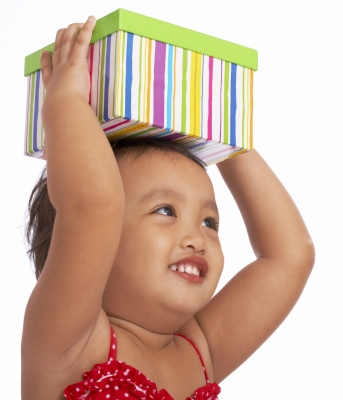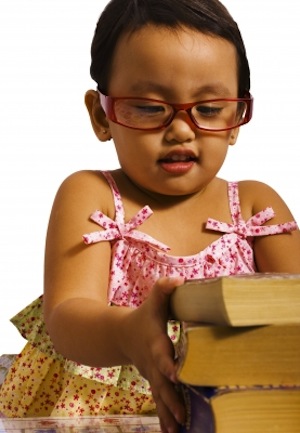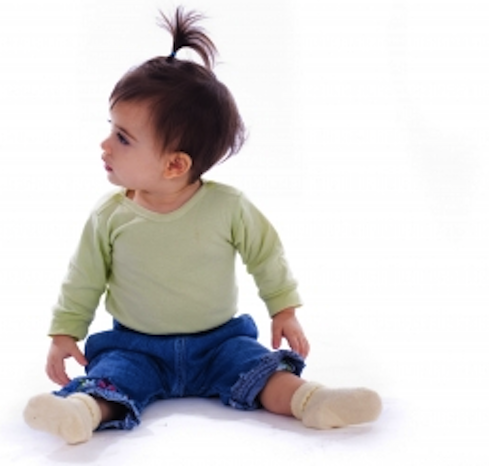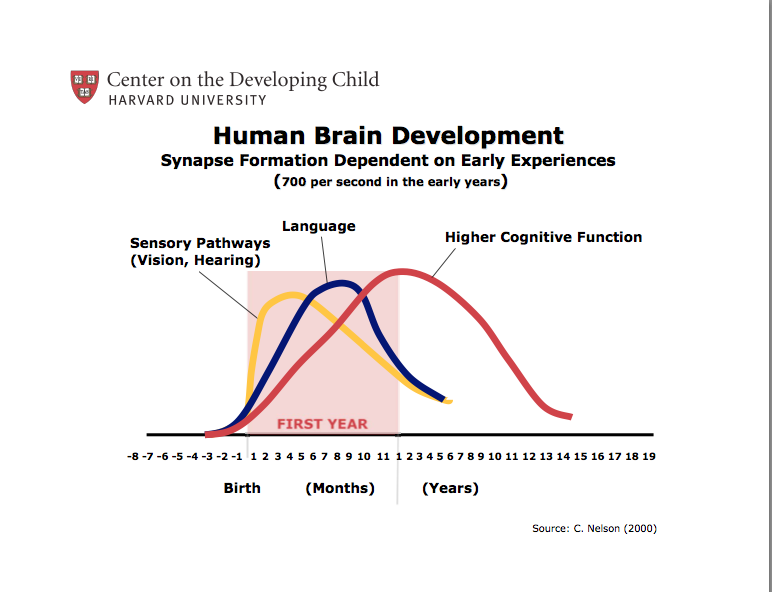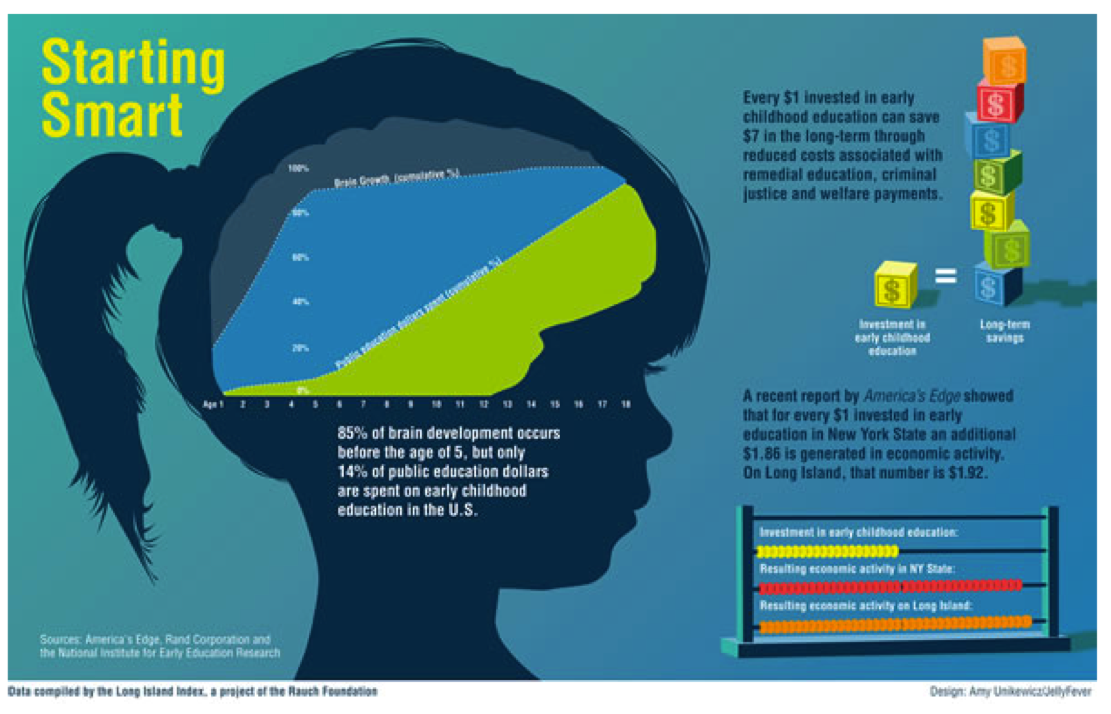Milestones for 12-17 Months
Once your child hits one year, they’ll continue to develop emotionally, physically and cognitively at a rapid rate. Between 12 and 17 months, children start to master skills like running and the ability to follow instructions. Remember that each child develops at his or her own pace so don’t worry if they’re not exactly on track. Here’s a simple breakdown of what milestones to look forward to during these exciting months:
Physical milestones
-Starts showing signs of right or left-handedness
-“Helps” you dress him or her by holding their arms out
-Bends to pick up toys, showing increased coordination
-Eats with his or her hands
-Points
-Starts running
Emotional milestones
-Becomes attached to a favorite stuffed animal or blanket
-Loves playing games
-Develops favorite foods and dislikes others
-Enjoys interacting with other children
Cognitive milestones
-Perfects a couple words and continues to work on others
-Recognizes (and loves) his or her reflection
-Develops the ability to follow simple instructions
-Has a shorter attention span (don’t worry! This is normal)
-Plays pretend
-Sorts toys and other objects by shape, size and color
Sources:
-“Toddler Milestones: 12-17 Months.” Parents.com
-“Developmental: 12 to 15 months.” Parenting Weekly
-Photo courtesy of Stuart Miles/freedigitalphotos.net
Baby Development: What to Look for in Babies 4-7 Months
When your baby hits four months, they’ll begin to go through all sorts of physical and mental growth. From new movements to name recognition, you’ll be amazed at the baby development that your little one goes through in a few short months. MomTrusted has summarized a few exciting milestones to keep an eye out for:
Physical developments
Babies will develop remarkably in physical ways during this stage of growth. Some typical physical developments include:
-The ability to roll right to left
-Some may even develop the ability to roll over to their stomachs
-Color vision
-Clearer vision in general
-Sitting with support and possible on his or her own
-The ability to put support on his or her legs
-Reaching
-Grabbing and transferring with alternating hands
-Raking, or pulling items closer
Mental developments
In addition to going through some big physical changes during these three months, babies will also have tons of new information shaping their minds. Here are some of the cognitive developments that you can expect:
-Spotting covered, “hidden” objects
-Starting to understand and respond to words like “no” and his or her name
-Can keep an eye on moving objects
-Beginning to recognize emotion in voices
-Responding to sounds with his or her own baby noises
Social, language and emotional developments
Finally, between four and seven months, babies will begin to grow socially and emotionally, starting with very small, but powerful signs including:
-Babies’ language skills will increase through babbling consonants.
-He or she will begin to interact with you or others through the form of play.
-Babies start to see, recognize and enjoy their own reflections.
-Not only will babies begin to recognize emotion through voice, but they’ll respond to others’ emotions, often by imitating them.
Sources:
-“Growth and Development Milestones: 4-7 months” parents.com
-“Infant Development: Milestones 4 to 6 Months” Mayo Clinic
-Photo courtesy of magerymajestic/freedigitalphotos.net
10 Ways to Increase Brain Development in Babies
Baby brains develop at a rapid rate. Infants’ neurological wiring holds a world of opportunities. Key development begins at an incredibly early age and stimulating your child’s mind could end up boosting their brainpower and shaping his or her intelligence for years to come. Here are 10 ways to help grow your baby’s intellect:
1. Grow a healthy brain before your baby’s born.
Staying as healthy as possible during pregnancy will give your baby-to-be the best shot at a healthy mind. Maintain a well-balanced diet, exercise, get plenty of sleep and schedule regular doctor appointments. Avoid medications that are known to harm fetal development because often, the brain is the first body part harmed.
2. Pay attention to your little one.
Children have a much higher chance of learning when their curiosity and observations are rewarded. Follow their gaze and comment on what they’re looking at, respond to pointing and describe what the two of you are checking out.
3. Converse with your baby.
Talk to your baby, even if he or she isn’t talking back just yet. Respond to baby talk and describe whatever you’re doing, whether it’s talking about making dinner or changing a diaper. This is how babies learn vocabulary and basic sentence structure.
4. Read to your little one.
Sparking an early interest in books and literature is essential to teaching language. Pick out books with large, colorful illustrations and simple story lines.
5. If your toddler is old enough to play, he or she is old enough to help clean up.
Enforcing cleanup early on introduces important concepts like responsibility and the idea of consequence. But remember, your toddler doesn’t know that cleaning up is a chore yet so make it fun! Sing a cleanup song while you work. Toddlers are eager to help and want to please so make a game out of cleaning up and always remember to thank your little helper.
6. Don’t shy away from a mess.
Scooping mud, splashing water and digging in sand is how little ones explore basic physics. Even though these messy ideas may seem like your worst nightmare, they’re essential for spiking your child’s curiosity and learning. Avoid disaster by making messy play extra structured and keep it outside. Then, when it’s cleanup time, head to the bathtub where your toddler can explore even more textures like slimy soap and a squishy sponge.
7. Allow for crawl space.
Many parents have a hard time letting their newly crawling babies run loose, but this is an important part of their development. Set up a safe, baby-proofed area, free of little objects and blocked off from stairs and sharp corners. Then let your baby run (or crawl) wild. This is how they can investigate the world around them and start to familiarize themselves with day-to-day objects.
8. Sing songs.
Songs are a fun way to learn. Children’s songs teach everything from the alphabet to animals to shapes and colors. They’re also a great way to pass times that may otherwise be boring for a little one. So next time you’re stuck in traffic, bust out your new secret weapon: the Itsy Bitsy Spider.
9. Use every opportunity to learn.
Sometimes parents forget that necessities, like meals or bath time, can be great learning opportunities to explore daily activities. So when you sit down to feed your baby, describe what he or she is eating. Is it fruit, a vegetable or something else? What’s it called? What color is it? Babies will begin to develop favorite tastes and learn to request them by name.
10. Remain positive whenever possible.
No matter how crabby, sleep-deprived and frustrated you get, try your hardest to remain positive. State rules clearly and, by all means, punish if you need to, but always try to reward good behavior. Often times, rewarding the good stuff will save you from having to punish the bad stuff later on.
Sources:
-“20 Ways to Boost Your Baby’s Brain Power.” Scholastic.
-Photo courtesy of Stuart Miles/freedigitalphotos.net
Sign Language for Babies
Recently, more and more parents have been teaching their little ones sign language, many before they can even speak. The idea is that babies have the cognitive ability to comprehend language, but lack the physical ability to make the sounds. They can, however, learn sign language because the ability to make hand motions comes before the ability to easily form words.
Many experts even believe the benefits of learning sign language go farther than communication. Some have found that use of signing as a baby leads to confidence and higher self-esteem later in life. Signing also rewards eye contact, an important component of socializing that they’ll master in their later years.
Take the time for a short class, research online or pick up a book on simple sign language. Then start signing to your baby when you speak to him or her. As early or six or seven months, little ones can start using those signs to communicate with you.
Manners
“Please” and “thank you” are easy signs to learn, but they’ll help instill manners from the very beginning, making them a habit and giving you the most polite baby around!
Food
Teach your baby his or her favorite foods. Signs for “milk” “peas” and “applesauce” could save you a spit up mouthful of mushed up carrots. Plus, the simple signs for “food” and “water” help your baby tell you when he or she is hungry or thirsty.
Useful words
Signs for “more” and “done” can be more useful than imaginable. Babies often throw tantrums to show frustration and what’s more frustrating than being unable to communicate? Save yourself a scene by teaching your little one how to ask for more or tell you they’re finished.
Sources:
-“Baby sign language: top ten starter signs.” Baby Sign Language
-“Teaching your baby sign language can benefit both of you.” Psych Central
-Photo courtesy of photostock/freedigitalphotos.net
Motor Skill Milestones
From only a few months old, babies will begin to develop motor skills. At first they’ll grab and giggle, but soon, they’ll begin to move their entire bodies.
Remember that each baby develops at his or her own pace so don’t panic if your child varies. However, if this is an ongoing trend you should ask your pediatrician about it just in case there are developmental delays.
Here are some key motor skill milestones to prepare for:
Rolling over
Around the same time that your baby is learning to sit on his or her own, they’ll learn to roll over. You’ll start to see your baby lift head and shoulders high, using arms in what looks like imitation pushups. Eventually, at as early as four months, your little one may be able to roll over from belly to back. But don’t worry if it takes another month or two to reverse the motion.
Crawling
Crawling typically starts to take place between six and 10 months. Likely signs that crawling is coming is if your baby starts repositioning his or herself from sitting up to hands and knees. You also may see some scooting, a sign of attempted movement. At first, babies may use the right leg and arm at the same time, but they’ll quickly learn that using the left arm with the right leg is much steadier and more efficient. Crawling gives babies an opportunity to explore the world around them.
Standing
After babies master crawling, they will begin to stand, not on their own at first, but while holding onto you or other objects for support. Babies are normally proficient standers by around nine months. Standing is an exciting sign because it’s the first step to walking.
Walking
Arguably one of the most exciting motor skill milestones, walking typically begins by holding onto objects and inching along. Most babies begin to walk on their own at around one year, but don’t begin to use more finely tuned motor skills, like walking backwards, until around 15 months.
Sources:
-“Developmental milestones: Rolling over.” Baby Center.
-“Baby physical and motor skills.” Baby Zone.
-“Baby Milestones.” Parenting.com.
-“Developmental milestones: Crawling.” Baby Center.
-“Milestone chart: 7-12 months.” Baby Center.
-Photo courtesy of photostock/freedigitalphotos.net
Little Minds, Big Development
Early Childhood Brain Development
We believe early education and care is important – that’s pretty obvious. But, even with all the time we’ve spent around early education and care, we are still amazed at the power of a child’s mind. It is what makes early education so important. The Harvard Center on the Developing Child has a great graph that reminded me how truly amazing these little minds are if we nurture them right.
How are you fueling your child’s development?
It starts early
A great infographic pointing out how critical early education is in a child’s development. Today, there is not enough focus on these important years. The good news is there are a ton of simple activities and ways parents and educators can help build a child’s foundation.
